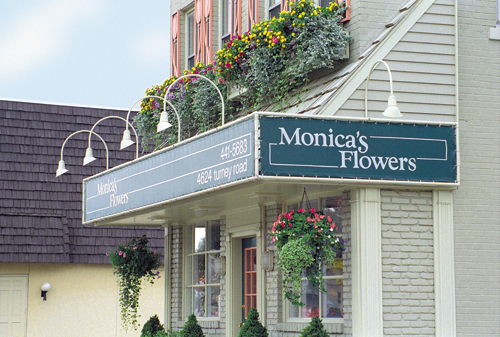Selecting the Right Architectural Lighting Fixture for Any Project Space
High-Pressure Sodium Lamps
High-pressure sodium lamps have an efficacy of 50 to 140 LPW—an efficacy exceeded only by low-pressure sodium lamps—and an impressively long lamp life rated for between 16,000 and 24,000 hours.
LEDs
LEDs, also referred to as solid state lighting (SSL), are the newest and latest light sources used in lighting. Highly efficient, these sources are able to create 30-100 LPW. Beyond improved energy efficiency; the system life is much longer than other available light sources. LEDs are rated to operate for between 35,000 and 50,000 hours before needing to be replaced. This long life significantly reduces the maintenance required by the system and the number of lamps sent to landfills every year.
Although LEDs are highly efficient, they do generate some heat, so it is important that the lighting fixture is capable of heat management. Most importantly, the diodes are very heat sensitive and excessive exposure to heat will seriously diminish or completely fail an LED board.
Considerations for Selecting Exterior Fixtures
Lighting fixtures destined for the outdoors must be designed to accomplish two objectives. First, moisture must be kept out of the area housing the socket and the lamp. If the socket becomes wet, the fixture will short out. Second, the heat created by the lamp when it is illuminated must be managed. If too much heat builds up around the lamp, the lamp will overheat and fail prematurely.
 |
Select an outdoor fixture that is made of metal so that it can provide a watertight housing, keeping the socket and lamp dry, and manage the heat created by the lamp. Photo courtesy of Bock Lighting |
The pursuit of this watertight and, simultaneously, cool environment is challenging because in order to keep dew, rain, snow, and other condensation away from the socket, the area must be airtight. In an airtight setting, neither moisture, nor air, nor heat can pass freely from the source to the exterior. Instead, the physical fixture becomes responsible for dissipating the heat.
The need to manage heat is the reason that high-quality outdoor fixtures are made of metal. It is also the reason that plastic fixtures are usually short-lived. Brass and aluminum effectively absorb the heat created by the light source, acting similar to a heat sink. The heat transfers from the lamp housing to the metal fixture and then radiates from the fixture into the environment.
Beyond functionality, another benefit of using brass and aluminum in the body of the fixture is that both metals are renewable and recyclable. Brass is the combination of copper and zinc and, today, almost 90 percent of all brass alloys are recycled. Aluminum is the most abundant metal in the Earth’s crust, and the third most abundant element overall, following oxygen and silicon. Soda cans, scrap metal, lighting fixtures and all other things aluminum can be recycled.









